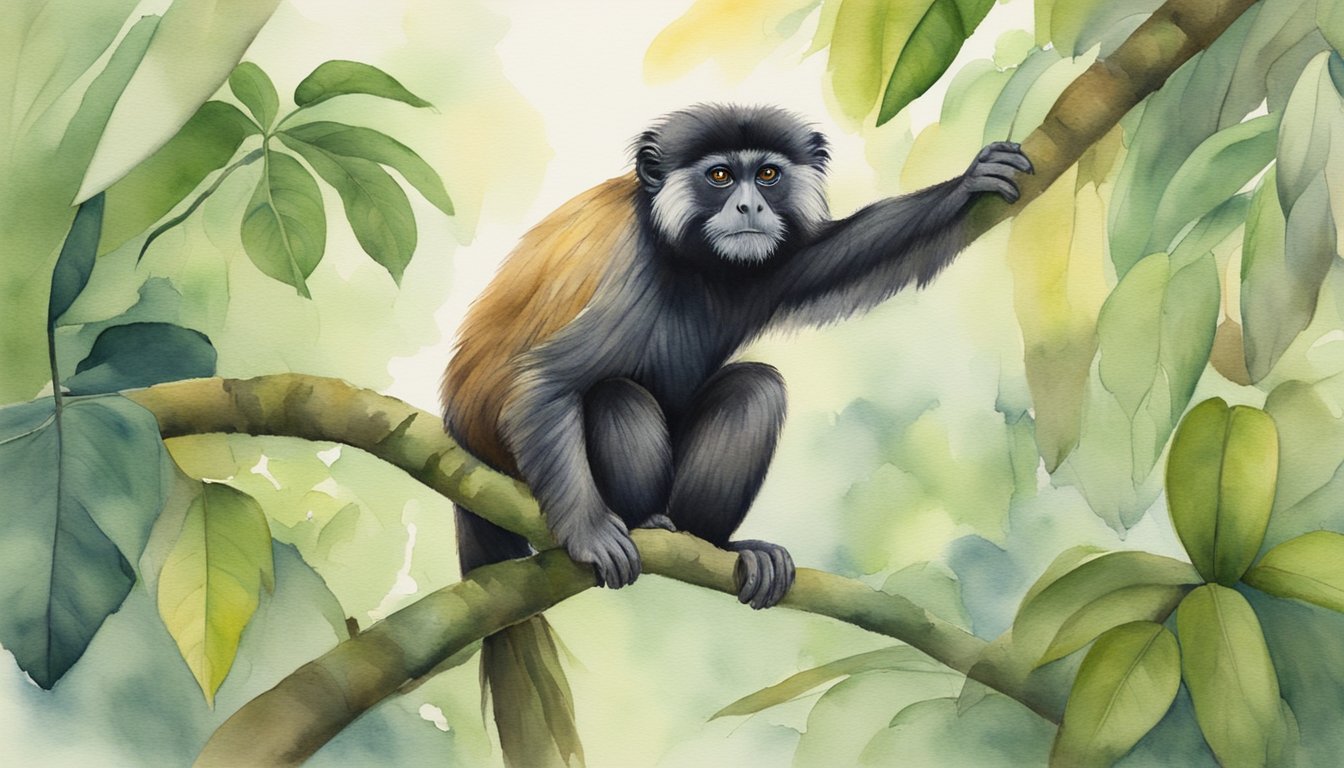Overview
Tamarin monkeys are a diverse group of small primates that belong to the family Callitrichidae. These fascinating creatures are known for their distinctive features and are found in various regions within Central and South America.
Physical Characteristics
Tamarins are notable for their expressive features and coat variations. A common trait among these primates is a distinctive facial hair, such as the mustache-like whiskers of the Emperor tamarin (Saguinus imperator), which is reminiscent of German emperor Wilhelm II. Sizes vary among species but they are generally squirrel-sized, with an average weight ranging from 220 to 900 grams. Tamarins sport a range of fur colors, including gold, brown, red, black, and white. These monkeys have non-opposable thumbs and long tails, which may be used for balance rather than prehension.
Habitat and Distribution
Tamarin monkeys are primarily found in the tropical rainforests of the Amazon Basin, extending across countries like Brazil, Colombia, Peru, and Bolivia. They are arboreal, spending the majority of their time in the forest canopy. The IUCN recognizes several tamarin species as endangered due to habitat destruction caused by agriculture and deforestation. The habitats range from secondary forests to dense primary rainforests, with some species like the cotton-top tamarin being critically endangered, largely due to human activities. The life span, social structure, and particular distribution of tamarins can vary widely among the recognized species and subspecies.
Behavior and Ecology

Tamarin monkeys display a fascinating array of behaviors and adapt to their ecology in remarkable ways. Their dietary habits and social interactions are crucial for their survival in the diverse habitats they occupy.
Diet and Foraging
Tamarins are omnivores and their diet primarily consists of both insects and fruit, which allows them to thrive in various tropical environments. Foraging for food occupies a significant part of their daily routine. Remarkably, some species, like the mustache tamarin, are also known to feed on sap from trees. They possess adaptations such as sharp claws for climbing that aid in their search for food, which they often find hidden under layers of bark or within the canopy.
- Main Diet Components: Insects, Fruit, Sap
- Adaptations for Foraging: Sharp claws for climbing
Social Structure and Reproduction
Socially, tamarins live in family groups that are typically led by a dominant female. These groups can exhibit polyandrous behavior, meaning a breeding female may mate with multiple males. A fascinating aspect of tamarin reproduction is their tendency to give birth to twins, unlike most other primates. They display cooperative care of the offspring, with multiple members of the group involved.
- Typical Group Structure: One dominant female, multiple males, offspring
- Reproduction: High incidence of twin births, cooperative offspring care
Tamarins face numerous threats, such as habitat destruction due to logging, which has led to certain species like the cotton-top tamarin being classified as endangered. These small New World monkeys are important indicators of the health of their ecosystems in countries like Brazil and Colombia. Conservation efforts are essential to protect these unique primates and their arboreal habitats.

